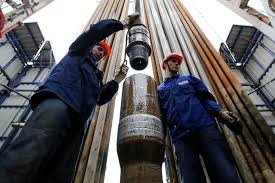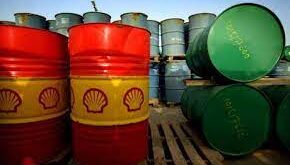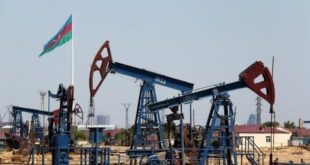Saudi Arabia and the other members of OPEC+ may have more room to raise production in the coming years than the market believes if Baker Hughes’ latest earnings are anything to go by.
The oilfield services provider said on Wednesday its adjusted profit fell 9 percent in the second quarter from the previous three months and it missed Wall Street estimates for earnings, as crude producers kept a tight lid on spending.
While oil demand has rebounded from the pandemic lows seen last year, output has only inched higher as large public companies vow to hold production flat. That has boosted oil prices, with crude futures trading earlier this month at levels last seen in 2018.
That bodes well for OPEC+, the oil producers alliance led by Saudi Arabia and Russia, which at a meeting this week to bring an extra 400,000 barrels a month onto world markets from the beginning of next month, and will allow some producers — including Saudi Arabia and the UAE — to increase the baseline from which they calculate production.
Crude prices fell sharply in response to the deal, but some analysts, such at US investment bank Goldman Sachs, said it provided an upside to their current forecasts.
“Shale’s rebound has been slow with the sector very cautious to add capacity,” said Andy Critchlow, head of news EMEA at S&P Global Platts. “The US rig count rose by four this week, bringing the total to 580 rigs, which is along way from its peak prior to COVID-19.”
“It gives OPEC+ more flexibility to strengthen and grow its market share,” he said. “Platts Analytics sees demand growing by 5.7 million b/d in 2021 and a further 4.7 million b/d in 2022, which will see overall consumption 1.2 million b/d above pre-Covid 2019 levels. It supports near-term view the world is going to need more supply coming online.”
The recovery in oil demand could face a threat from new strains of COVID-19, but spending and activity should gain momentum through the year as the macro environment improves, Chief Executive Officer Lorenzo Simonelli said in a statement.
The OPEC+ deal followed protracted negotiations as the UAE pushed for higher output.
The group last year cut output by a record 10 million barrels per day (bpd) amid an evaporation in demand the pandemic developed, prompting a collapse in prices with US oil at one point falling into negative territory.
To overcome internal divisions, OPEC+ agreed new production quotas for several members from May 2022, including the UAE, Saudi Arabia, Russia, Kuwait and Iraq.
“This agreement should give market participants comfort that the group is not headed for a messy breakup and will not be opening up the production floodgates anytime soon,” RBC Capital Markets said in a note .
Increased supply in Saudi Arabia is helping some oil-services firms. Halliburton said yesterday improved business in its Saudi operations helped to grow its Middle East second-quarter revenues.
The oilfield services contractor on Tuesday reported a 33.5 percent increase in second-quarter profit from the previous three months, as an oil price rebound spurred demand for work.
The Houston-based company said net income advanced to $227 million in the three months ended June 30, from $170 million in the first quarter.
Its Middle East and Asia revenues gained 5 percent sequentially to $925 million resulting from” improved activity in multiple product service lines in Saudi Arabia, higher well intervention services across the region, increased drilling-related services in Oman, higher completion tools sales in Kuwait,” the company said in a statement.

 Iran Energy News Oil, Gas, Petrochemical and Energy Field Specialized Channel
Iran Energy News Oil, Gas, Petrochemical and Energy Field Specialized Channel



